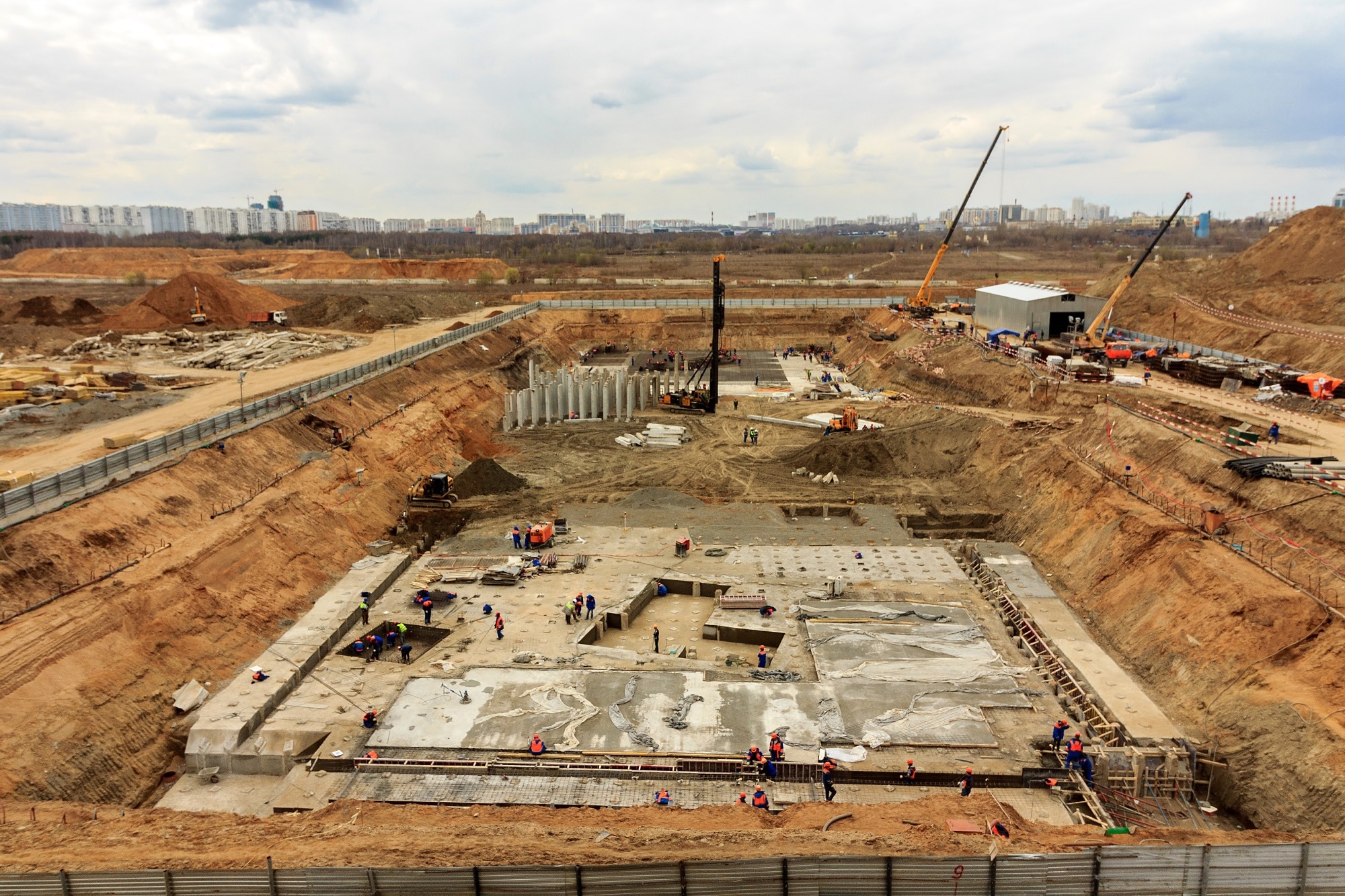In an article recently published in the journal Buildings, researchers proposed a novel three-row pile support structure. They also proposed its collaborative integration with the basement of the main structure to address challenges associated with constructing high-rise tower structures near sensitive buildings, particularly in the context of an ultra-deep fill pit.

Study: Tackling Modern Construction Challenges with the Innovative Three-Row Pile Approach. Image Credit: Studio MDF/Shutterstock.com
Background
The land required for urban construction is increasingly becoming scarce with rapid urbanization and societal development. Thus, urban construction is shifting towards vertical expansion that requires deep foundations. This shift results in larger excavation areas and depths for foundation pit projects, stricter deformation limitations, and more complex geological conditions and environmental considerations surrounding the foundation pit.
The evolution of the pile support structure for deep foundation pits has progressed from a single-row pile to a double-row pile, catering to diverse engineering conditions. However, the double-row pile structure fails to meet some urban construction project requirements due to more complex geological conditions, demanding engineering requirements, and further excavation of the foundation pit. In such projects, the double-row pile structure is utilized with anchors and internal support, leading to a loss of convenient construction advantages.
Importance of Three-Row Piles
A new foundation pit support structure type, designated as the three-row pile, can address this problem. The three-row pile possesses greater overturning resistance and higher lateral bending stiffness and can better limit the support structure deformation. Thus, the three-row pile structure has gained significant attention from researchers due to its improved development prospects.
Although several studies have been performed on the double-row pile support structure's design theory and calculation model, three-row pile support structures lack sufficient in-depth and systematic research. Specifically, a standardized foundation and established calculation theory have not been developed for the calculation and design of three-row piles.
The Proposed Approach
In this study, researchers proposed a three-row pile support structure and its cooperative construction method with the main structure’s basement for an ultra-deep fill pit near a sensitive building. Specifically, they proposed the structural design and calculation model of a stepped three-row pile and verified its anti-sliding and anti-overturning stability based on the Xinghe Yabao deep foundation pit project in Shenzhen, China.
This study systematically demonstrated a novel three-row pile support system's design process and calculation method to address the literature gap in this field. The three-row pile model was constructed using finite element software, and the piles' force and deformation were analyzed. Additionally, the influence of the pre-stressing anchors' direction on the three-row pile support’s effect was investigated by simulating those anchors in three directions, including vertical, horizontal, and oblique.
Ultimately, a novel construction technique involving the removal of three-row piles and the implementation of basement top-down construction/removal, along with cooperative construction technology with the basement, was introduced for high-rise tower structures. A three-dimensional (3D) model of the tower building and its basement was created using finite element software. This model was utilized to simulate the cooperative construction process between the basement structure and the supporting structure, as well as to analyze the structural grading load.
Significance of the Study
The proposed three-row pile support system provided a new kind of deep foundation pit support. Its distinct step-type structural form ensured sufficient space for the prestressing anchor construction, which effectively addressed the construction line encroachment problem adjacent to sensitive buildings.
Results obtained from the finite element analysis and stability calculation of the three-row piles showcased that the suggested three-row pile support system exhibited superior support stiffness and robust resistance against overturning. This capability enables effective control over the deformation of ultra-deep foundation pits, particularly those with thick fill layers.
Moreover, the orientation of the prestressing anchor cable significantly influenced the effectiveness of the three-row pile support system. Specifically, the combined support effect of the three-row pile joint support and the oblique anchor cable proved to be the most effective in controlling deformation, resulting in minimal deformation.
The horizontal anchor cable demonstrated the second-best performance, while the vertical anchor cable showed the worst performance by producing the largest deformation. Thus, the oblique anchor cable was chosen for the three-row pile support system.
The proposed cooperative construction technology of the basement and three-row pile used the plate and beam structure of the B1 floor basement and the first floor in the top-down area. Moreover, a large-span concrete truss structure was formed by adding two temporary diagonal rod sets to increase the structure's vertical load-bearing capacity in the top-down area by 400 %.
Thus, this method could accelerate construction progress, completely utilize construction space, and reduce construction cost while meeting the foundation pit support requirements. This offers valuable experience in the construction and design of deep foundation pits.
To summarize, the findings of this study offer a scientific underpinning and theoretical framework for building and devising a three-row pile support structure in an extremely deep foundation pit project.
Journal Reference
Zhu, Y., Qin, H., Zhang, X., Wei, D., Zhai, L., Hu, L. (2024). Innovative Three-Row Pile Support System of Ultra-Deep Foundation Pit and Cooperative Construction Technology with Basement for High-Rise Tower Structures. Buildings, 14(4), 1003. https://doi.org/10.3390/buildings14041003, https://www.mdpi.com/2075-5309/14/4/1003
Disclaimer: The views expressed here are those of the author expressed in their private capacity and do not necessarily represent the views of AZoM.com Limited T/A AZoNetwork the owner and operator of this website. This disclaimer forms part of the Terms and conditions of use of this website.